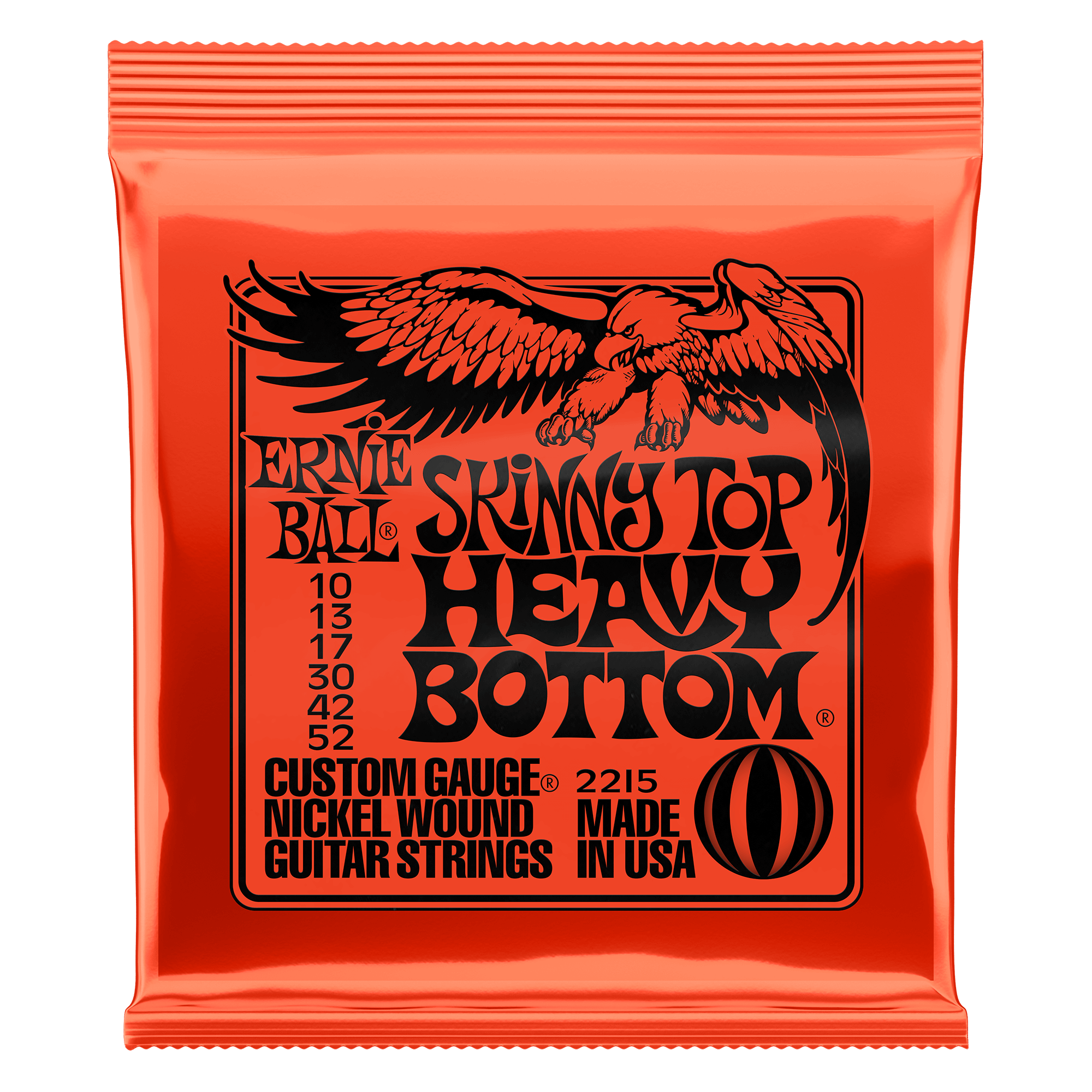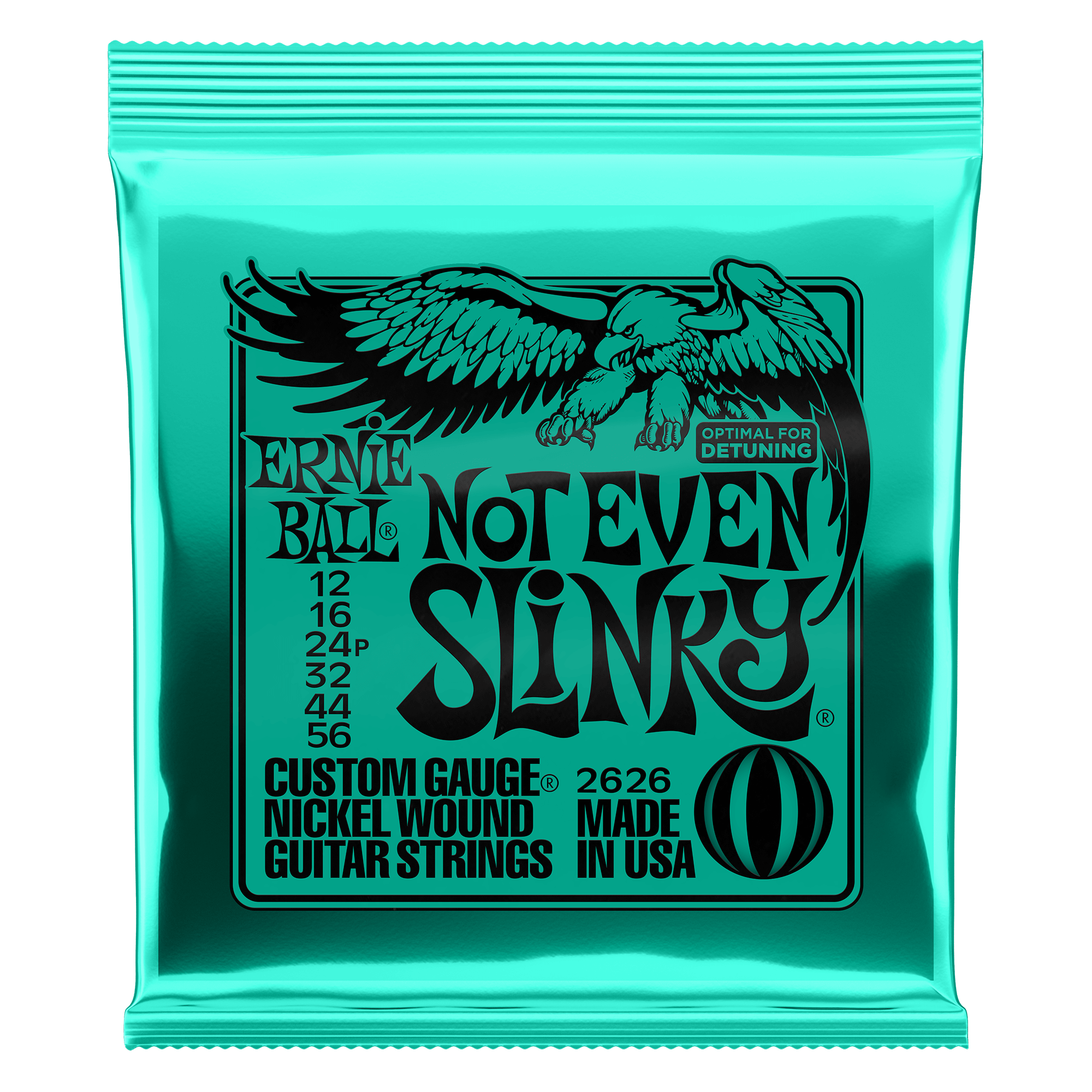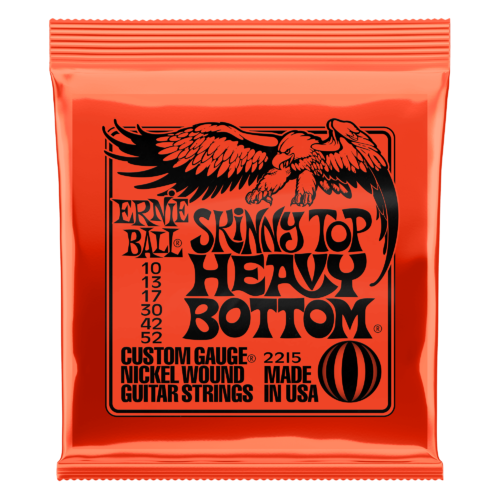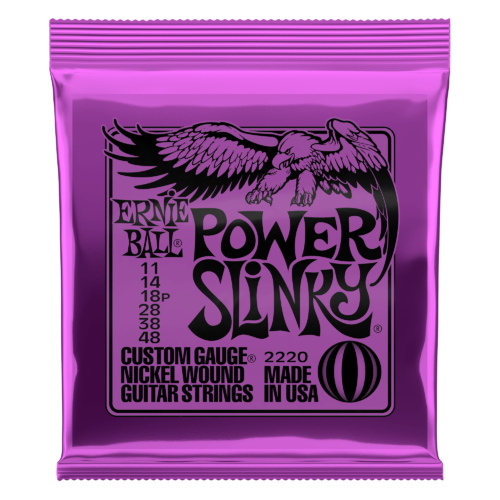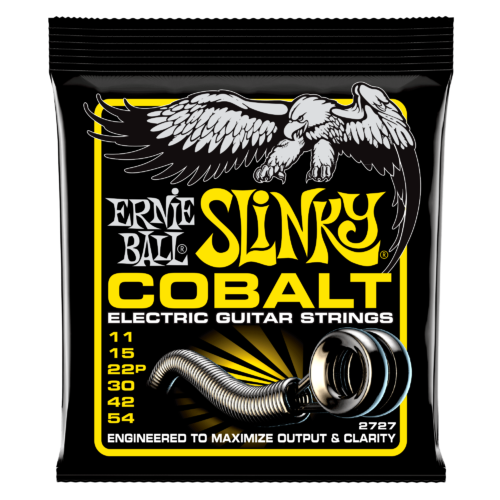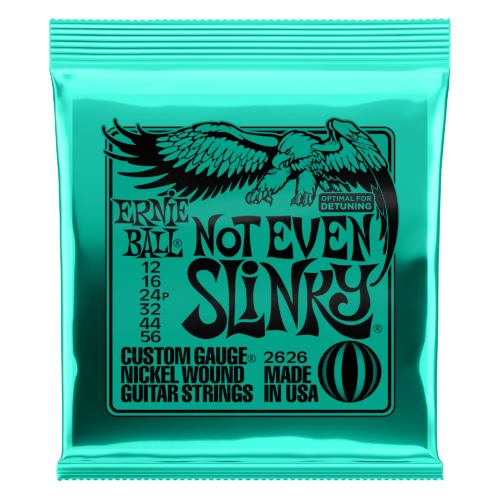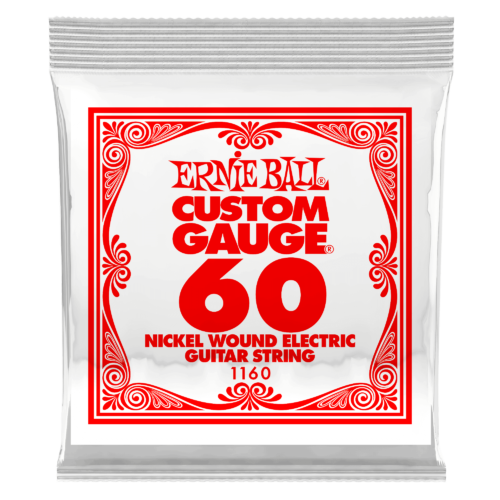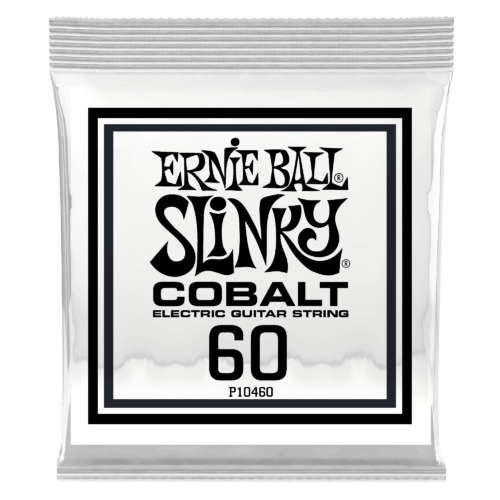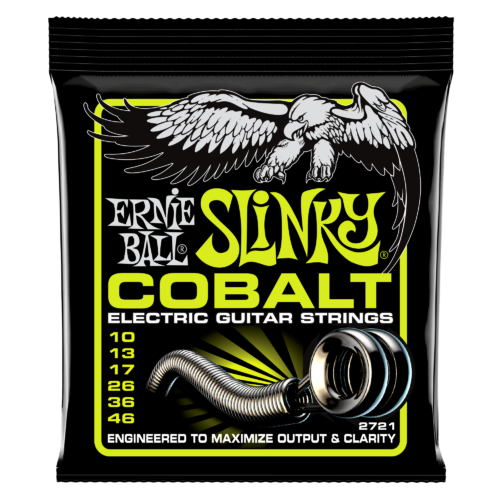Ernie Ball artist and YouTube extraordinaire Ryan “Fluff” Bruce has shared an incredibly helpful guide to help you determine which string gauge is right for you. He takes into account a number of different factors, including scale length (Fender Scale [25.5″] or Gibson Scale [24.75″]), tuning, playing style and more. We want to make things even easier for you to find the right set, so we’ve rounded up some helpful images and links to get you all set up.
Electric Guitar String Gauges
Electric guitar strings — like acoustic guitar or electric bass strings — are manufactured in a range of thicknesses or gauges. The thickness of an electric guitar string has a large influence on the playability and sound in addition to other factors like the string material.
Lighter Gauges
Easier to bend and play, so ideal for beginner guitar players with uncalloused hands
Ideal for vintage electric guitars
Even projection with bright sound
Heavier Gauges
Require more finger pressure to fret and bend notes
Hotter output with punchy tone
Are preferred for low tunings such as Drop D, Drop A, etc
Exert more tension on the guitar neck
Guitar Tunings
E Standard
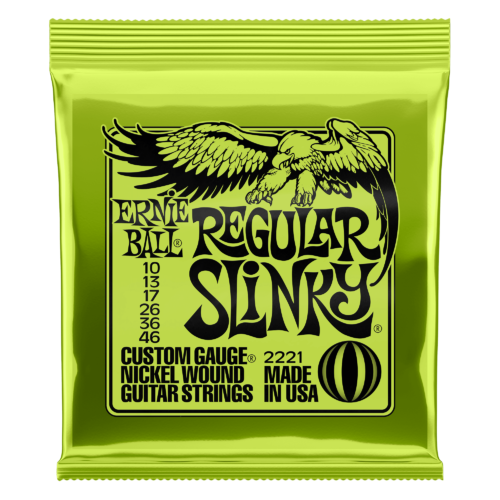
Both Scales – Regular Slinky (10-46)
Standard set, generally what comes on a guitar stock from the manufacturer.
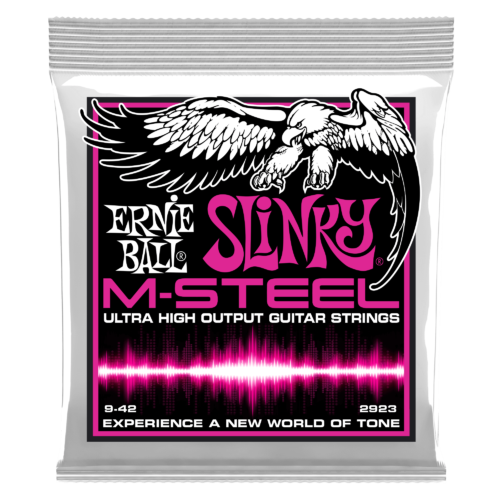 Fender Scale – Super Slinky (9-42)
Fender Scale – Super Slinky (9-42)
Preferable for a looser, Les Paul-like feel on a Fender Scale instrument.
 Gibson Scale – Skinny Top / Heavy Bottom (10-52)
Gibson Scale – Skinny Top / Heavy Bottom (10-52)
Preferable for getting a heavier, more Strat-like tension on a Gibson Scale instrument.
Drop D
Both Scales – Skinny Top / Heavy Bottom (10-52)
Maintains slinkiness on the high strings, and beefs up the feel on the lower strings, especially when dropped.
Eb Standard
Fender Scale – Skinny Top / Heavy Bottom (10-52)
For a tighter feel on the lower strings.
Gibson Scale – Power Slinky (11-48)
Slightly on the heavier side, while retaining a bit of looseness and slinkiness on the Gibson Scale.
Drop C#
Fender Scale – Power Slinky (11-48) + 52
Using the 11-48 set with the low-E string swapped out for a 52 gives you all of the low-end chug that you need while still feeling like standard tuning on the higher strings.
Gibson Scale – Beefy Slinky (11-54)
Retains the feel of standard tuning even when dropped to a much lower tuning.
D Standard
Fender Scale – Beefy Slinky (11-54)
Optimal for detuning. Similar to the Skinny Top / Heavy Bottom, but several gauges heavier. Provides a higher-tension feel.
Gibson Scale – Power Slinky (11-48)
Retains the feeling of normal tension, even with the lowered tuning.
C Standard
Fender Scale (Option A) – Not Even Slinky (12-56)
Still feels slinky, but retains a good amount of tension.
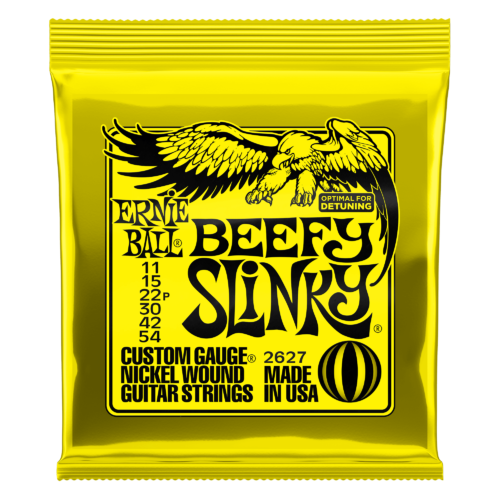
Fender Scale (Option B) – Beefy Slinky (11-54)
For an even slinkier, looser feel.
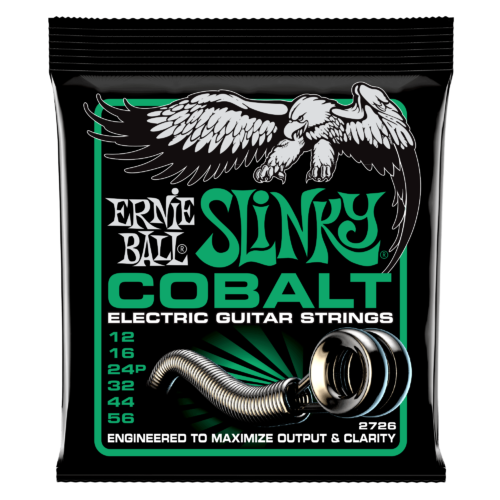
Gibson Scale – Not Even Slinky (12-56)
Helpful for retaining proper tension with a shorter scale.
Drop C
Fender Scale – Beefy Slinky (11-54) + 56
Using the Beefy Slinky set with a 56 swapped out for the low-E (or even a 60!) feels fantastic.
Gibson Scale – Not Even Slinky (12-56)
A great middle-ground for size vs. tension. Adding a 60 on the low-E string can also provide even more “oomph” to the low end.
Drop B
Fender Scale – Single Strings (11, 15, 20, 36, 48, 60)
Creating a custom set of single strings allows you to retain tension on the higher strings, while allowing enough twang on the lower strings.
Gibson Scale – Single Strings (12, 16, 24, 36, 48, 60)
A slightly adjusted custom set of single strings allows you to beef up the higher strings, while retaining the size of the lower strings. Can also use a 62 or 64 on the low-E string for added heaviness and tension.
Bass Tunings
E Standard and Drop D
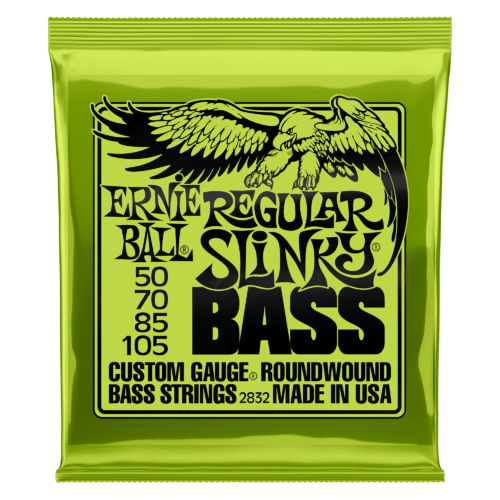 Regular Slinky Bass (50-105)
Regular Slinky Bass (50-105)
Good tension and good attack. Not too tight, not too loose.
Eb Standard and Drop C#
Regular Slinky Bass (50-105)
Translates well from E Standard and Drop D all the way down to Eb Standard and Drop C#.
D Standard and Drop C
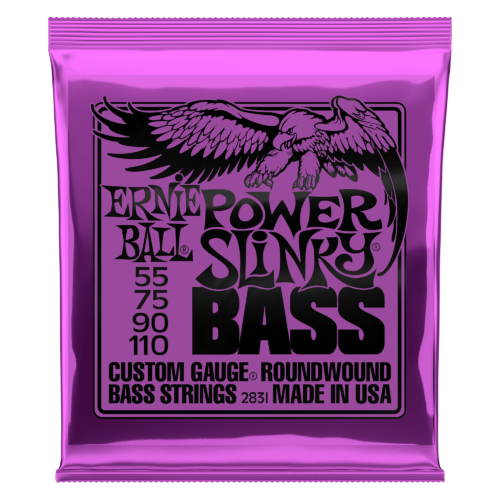
Power Slinky Bass (55-110)
Healthy tension, but not overkill. Doesn’t fatigue the hand, but enough tension to dig in with heavy attack.
Drop B
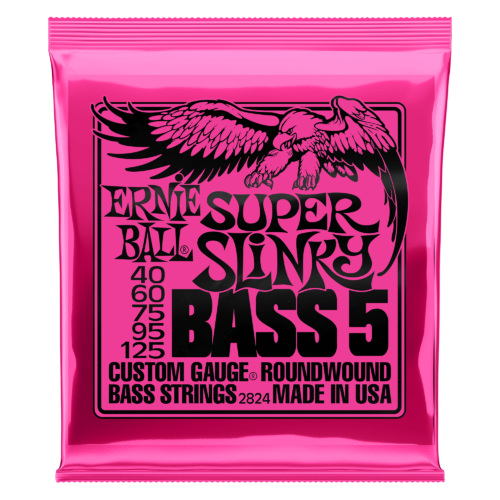
Super Slinky Bass 5 (60-125) – 40
By using just the lower four strings from a Super Slinky 5-string bass set, the tension remains dialed in for such a low tuning. Can also use the same approach with the Regularly Slinky Bass 5 set. Provides for solid attack, without the “flop.”
Cheat Sheet
Guitar Strings
Tuning |
Fender Scale (25.5″) |
Gibson Scale (24 3/4″) |
| E Standard | 10-46 (normal tension) | 10-46 (normal tension) |
| 9-42 (loose feel – Les Paul-like) | 10-52 (more tension – Strat-like) | |
| Drop D | 10-52 (light top heavy bottom) | 10-52 (light top heavy bottom) |
| Eb Standard | 10-52 (tigheter feel on low strings) | 11-48 (normal tension) |
| Drop C# | 11-48 +52 (normal tension) | 11-54 (normal tension) |
| D Standard | 11-54 (higher tension) | 11-48 (normal tension) |
| C Standard | 12-56 (regular tension) | 12-56 (normal tension) |
| 11-54 (loose feel) | ||
| Drop C | 11-54 +56 (normal tension) | 12-56 (normal tension) |
| Drop B | 11, 15, 20, 36, 48, 60 | 12, 16, 24, 36, 48, 60 |
Bass Strings
Tuning |
Fender Scale (34″) |
| E Standard, Drop D | 50-105 (normal tension) |
| Eb Standard, Drop C# | 50-105 (normal tension) |
| D Standard, Drop C | 55-110 (normal tension) |
| Drop B | 60-125 (normal tension) |






